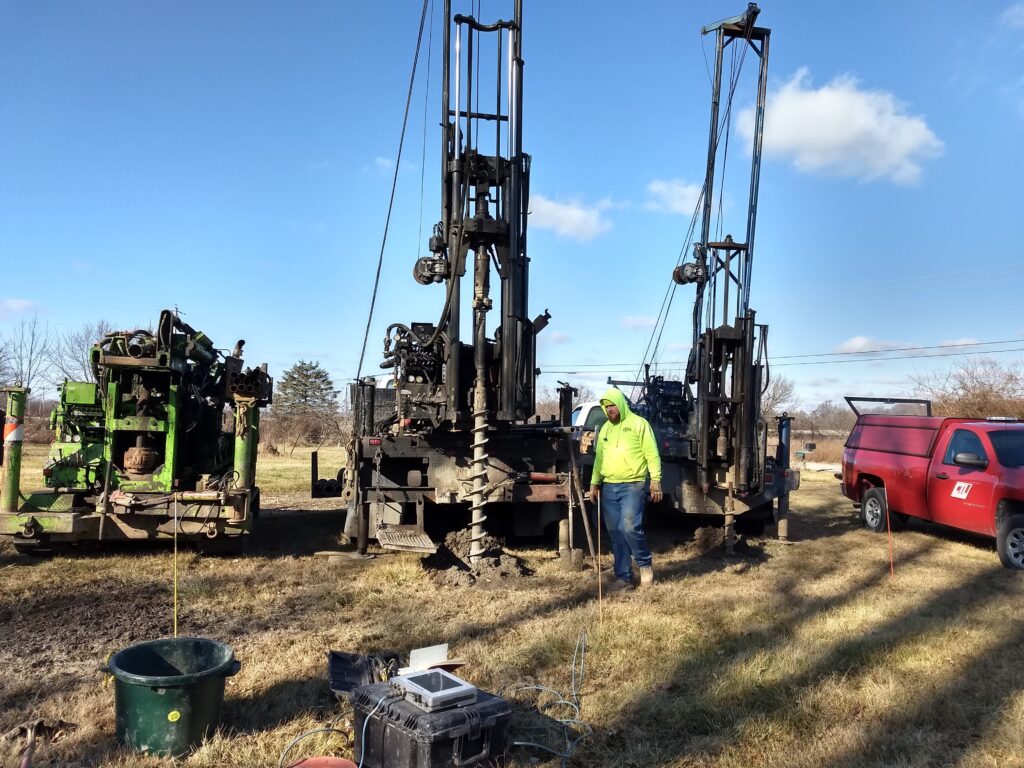SPT Hammer Calibration Can Be Performed During Existing Projects
By Shahedur Rahman, E.I.
ODOT and many public entities require geotechnical firms to complete a Standard Penetration Test (SPT) Hammer calibration at least every two years.
CTL Engineering can often make the calibration process easier for firms by completing the test in the field on existing projects.
As long as firms can dig at least 40 feet in an area without bedrock, CTL can often perform calibration while the geotechnical firm already has the SPT hammer equipment in the field.
What is SPT Hammer Calibration?
One of the main tools of geotechnical firms to collect information about the soil and underground environment are soil borings and standard penetration tests (SPT). Engineers perform these tests with drill rigs equipped with an automatic hammer. By measuring the number of blows and the energy in the hammer, geotechnical firms can determine the resistance to penetration of the drill rod into the soil—ultimately helping firms understand how strong the soil is.
For the tests to give accurate information, engineers must calibrate the SPT hammer to reflect a precise energy measurement, also known as an energy ratio. Wear and tear over time, and lack of proper maintenance can change the energy ratio of SPT hammers.
The American Society of Testing Materials (ASTM) has developed a standardized method to measure the energy of automatic hammers. Additionally, many entities now require proof of calibration to ensure accurate results. For instance, the Ohio Department of Transportation (ODOT) requires geotechnical firms involved in city, county, or state projects to prove that engineers calibrated the SPT hammer within the past two years.

What is the best way to perform SPT Hammer Calibration?
CTL Engineering regularly performs SPT Hammer Calibration for other geotechnical firms.
To save time and resources, CTL will often work with firms to perform the calibration in the field on an existing project when the SPT hammer is already in use.
The calibration process is not intrusive and only requires CTL to attach a sensor with a strain gauge and accelerometer to the hammer to measure strain and force.
To meet ASTM standards, the hammer must dig to a depth of at least 40 feet in an area that does not have bedrock.
The entire process takes less than half a day, and clients will typically receive results from CTL the next day.
What is the difference between SPT Hammer Calibration and Dynamic Pile Load Testing
CTL can perform dynamic pile load testing using the same equipment used for SPT hammer calibration. By measuring the resistance of the soil to the drill rod using the same techniques, dynamic pile load testing can determine the load-bearing capacity of each pile.
Rather than static load testing, which measures the capacity of individual piles already placed in the ground, dynamic pile load testing measures the capacity of the pile as the construction team installs it. Understanding an accurate capacity is essential to ensure the pile will support the building or structure placed on top of it.
CTL expects to receive certification from the Pile Driving Contractors Association shortly, allowing engineers to perform this additional test.
Shahedur Rahman, E.I.
Mr. Rahman has three years of Geotechnical Engineering experience and presently serves as a Staff Geotechnical Engineer for CTL Engineering’s Columbus, Ohio office. His responsibilities include managing geotechnical engineering projects, providing foundation recommendations for bridges, buildings, towers, tanks and subgrade recommendations for roadways. Mr. Rahman’s experience includes performing foundation analyses, slope stability analyses, pile design for retaining wall structures, and settlement analyses for deep and shallow foundations. His other experience includes performing data acquisition and interpolation of energy transfer ratio for drill rigs using Pile Driving Analyzer (PDA), performing field geotechnical explorations, reviewing and conducting laboratory tests.

